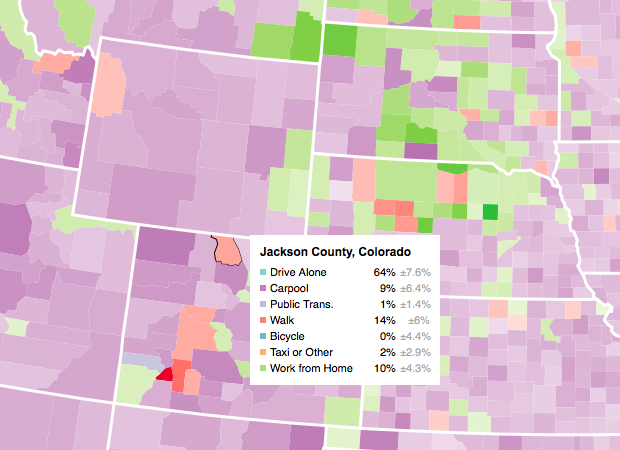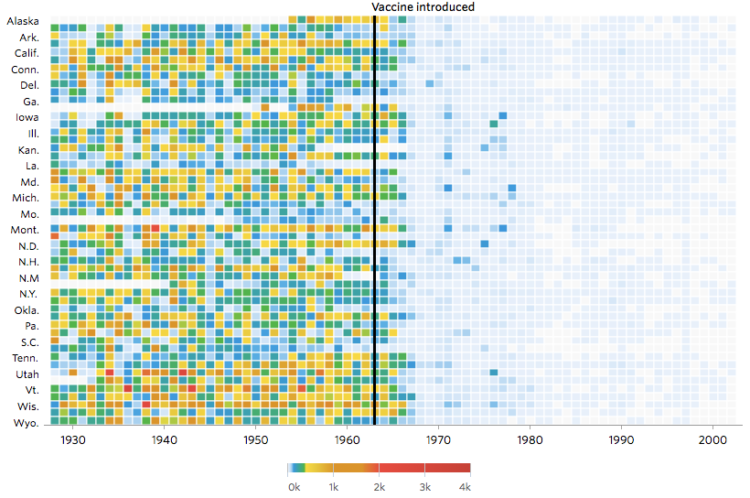Jonathan Dushoff had issues with students in his population biology class cheating on his exams. One year there was suspicious behavior, but Dushoff and the proctors weren’t able to prove the students cheated as it happened. So he looked closely at the test results to find the guilty students.
Read More
-
-
Bayes’ theorem is covered in introduction to statistics and probability courses, but I think a lot of people starting out don’t understand it conceptually. They see a formula that you plug numbers into. Here’s an example using LEGO bricks that clarifies the confusion, hopefully.
-
Did you hear the news? The White House officially appointed DJ Patil as the federal government’s first ever Chief Data Scientist. Awesome.
Here’s Patil, with an introduction by President Barack Obama, on what’s in store and a recruitment note for the US Digital Services.
Read More -
Artist Alberto Frigo took a picture of every object he used with his right hand for the past 11 years. Averaging 76 photos per day, the project — Images of the artifact used by the main hand — is low-tech, with just a small, hand-held camera. No internet connection, tagging, or documentation. Just a stream of photos.
Frigo aims to do this until age 60, so he has only 25 more years to go. Yep.
-
Quoctrung Bui for Planet Money plotted average income for the top one percent of earners against the average income of the bottom 90%, from 1920 to 2012. Through the 1970s, the animation shows rising income for the bottom and relatively static for the top and then vice versa after that.
Read More -
Making an Interactive Map with Category Filters
Let readers focus on the regions they care about to make their own comparisons and conclusions.
-
Not that anyone who does not vaccinate their kids cares, but Tynan DeBold and Dov Friedman for the Wall Street Journal show the change in number of cases for various diseases after a vaccination is introduced.
Read More -
Loading Data and Basic Formatting in R
It might not be sexy, but you have to load your data and get it in the right format before you can visualize it. Here are the basics, which might be all you need.
-
Because using Tinder takes up oh so much time swiping, swiping, and swiping, Justin Long made a bot that swipes and starts conversations for him. Step 1: Use his existing preferences to create two Eigenfaces, commonly used in face recognition, that represent a yes and a no. Step 2: Automate everything else with the Tinder API.
Read More -
Watch one bird fly around, and it’s hard to make out its flight pattern. Time shift multiple copies of that bird, creating an echo effect, and it’s easy. Parker Paul did this with seagulls flapping around at the beach and After Effects.
Read More -
The Sid Lee agency in Paris has Arduino-powered sensors hooked up throughout their office, and they brought the data together in a single dashboard. The result is a fun look into the inner workings of the agency in real-time.
Read More -
Audio Landscape is a novel music visualizer that constructs a landscape based on the MP3 that you give it. As you fly overhead, you can see the mountains constructed in the distance. (You probably want to open Chrome for this one. Safari kind of buckled for me.)
-
There is no more reason to expect one graph to “tell all” than to expect one number to do the same.
—John Tukey, Exploratory Data Analysis, 1977.
-
In the first song of his music experiment Data-Driven DJ, visual artist Brian Foo used median household income data to create a song that represents a ride on a New York subway.
Read More -
In a discussion of context and visualization, Jen Christiansen pulls out a good snippet from Jacob Bronowski’s The Observer (1952) on design constraints.
Read More -
The most recent episode of RadioLab is on social experimentation and social networks. More specifically, Facebook and their timeline tinkering.
Read More -
Mosaic provides a simple comparison of brain size in a handful of animals so that you can compare to the average human. Select among several measures such as actual weigh, percent of body mass, or number of neurons. These measures don’t seem to say much about smarts.
Absolute brain size clearly isn’t what really matters, otherwise people would be cognitive pygmies compared to whales and elephants. But brain size relative to body size doesn’t seem to be a particularly informative measure either. Marmosets — diminutive monkeys that are not thought to be among the brightest of primates — have brains that tip the scales at around 2.7 per cent of body mass, easily beating our own 2.0 per cent.
-
The ghosts in Pac-Man have different personalities represented by their search technique. For example, Pinky tries to predict where you will be in four moves. I had no idea. Game/Show provides an overview of the in-depth details covered by The Pac-Man Dossier by Jamey Pittman.
Read More -
Andrew Van Dam and Renee Lightner for the Wall Street Journal provide a couple of useful linked views of unemployment and job gains and losses. The former comes as a grid where each cell represents the unemployment rate, and the standard time series is shown below that.
Read More -
The New York Times mapped the vaccination rate for every kindergarten in California. Bubbles are sized by enrollment and colored by rate, where red represents under 60 percent and blue represents at or above the rate recommended by the CDC for herd immunity.
Glad the Times was able to get this data together. Important.









 Visualize This: The FlowingData Guide to Design, Visualization, and Statistics (2nd Edition)
Visualize This: The FlowingData Guide to Design, Visualization, and Statistics (2nd Edition)










